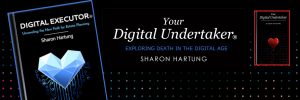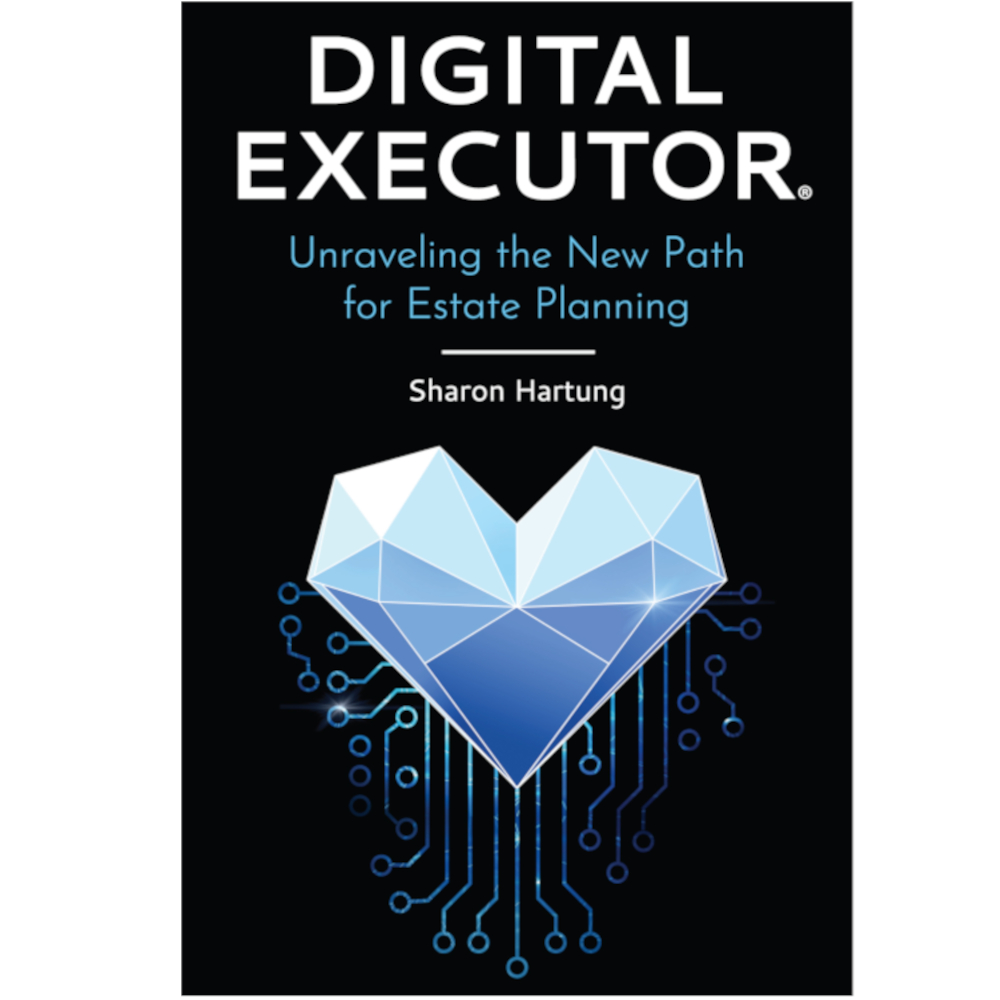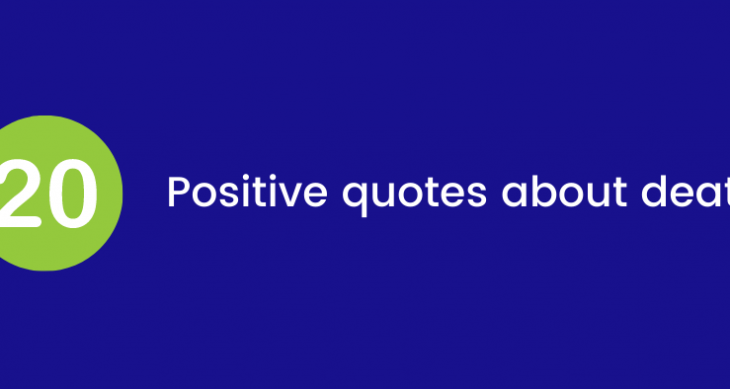
Book Review: Digital Executor, Unraveling the New Path for Estate Planning
By Erin McCune . May 7, 2021
The Digital Undertaker strikes again.

Sharon Hartung, aka The Digital Undertaker, has just released her new book “Digital Executor: Unraveling the New Path for Estate Planning”. As in her first book, “Exploring Death in the Digital Age,” she’s tackled the unwieldy topic of Digital Estate Planning, but this time from the perspective of the Estate Planner and the fiduciary role, reminding readers that “Today’s executor is a digital executor—as such, today’s estate advisor must be a digital estate advisor.” After all, “Digital assets are not only assets unto themselves, but also manifestations of physical things, often providing the conduit or access to underlying already intangible assets.”
“…this tech-savvy generation will expect technology readiness to access, transfer, or manage accounts.”
Sharon takes a very pragmatic approach to the discussion, pointedly reminding readers that “the deceased can’t ask from the grave why you didn’t have them create an asset inventory, or discuss the necessity of sorting out their digital lives, or the impact the digital age has had on their estates, but dissatisfied beneficiaries and fiduciaries can.” As a financial advisor or estate planner, “…this tech-savvy generation will expect technology readiness to access, transfer, or manage accounts.”
The change from traditional estate planning to today’s world has been rapid. “10 years ago, the idea that a client’s digital footprint, e-mail, or social media accounts had any inherent estate planning value might have seemed absurd.” Yet today, people now expect nearly every piece of information, every picture, every resource, to be readily available to them at their fingertips. Whether or not that’s a realistic expectation (and, Sharon argues, “it can be next to impossible to do anything with them if they haven’t pre-planned”) the beneficiaries and fiduciaries are likely to expect the same instant access to the testator’s information that they enjoy in their day-to-day use of the internet.
Sharon does a great job articulating the challenges that failing to plan for your digital estate will present for both the beneficiaries and fiduciaries, and the professionals that advise them. She paints a very clear picture where “Today’s fiduciary will walk into the deceased’s home office and likely mutter under their breath, ‘Please, please, please, let there be an estate binder or at least a printed copy of some statements that are not shredded.’ And then hypothesizes that a chirpy Alexa will reply, “‘Hey you, fiduciary. I am Ms. Privacy’s digital assistant. No, Sorry, she didn’t create an estate binder. She had planned to but used the time to set me up instead—she told me it was more fun than collecting paperwork. Oh, and good luck finding any passwords that will give you access to her laptop and other electronic devices: they were written on a small note taped under the desk, but it fell to the floor and someone got it stuck under their shoe and walked off with it several months ago.’”

The challenges that Sharon articulates are all too real, and faced by families even today, though sadly, more families than not haven’t prepared their digital estate, meaning that “with all of us online for everything, including managing our households and filing taxes, the fiduciary will likely be faced with a locked computer or device screen with potentially limited or no ability legally or otherwise to access.”
“giving someone a list of passwords without guidance is as dangerous as leaving your car keys in the ignition or dropping your wallet on the street.”
But it’s not enough just to create a list of usernames and passwords, either, without having a tool to designate your digital executor and clarify your wishes. “What will be acceptable as digital access information for the fiduciary is an evolving space. “From a practical perspective, giving someone a list of passwords without guidance is as dangerous as leaving your car keys in the ignition or dropping your wallet on the street.”
Sharon’s book is packed with practical advice for estate planning professionals, including suggestions to “advise clients to do the following: Establish their privacy settings while they are alive. Purge accounts and content that is no longer of use. Use any pre-planning functions that are available. Regularly download and back up any data (such as photos) they want someone to have access to after their incapacity and/ or death.”
The practical advice she offers is tempered with the recognition that all of this is highly emotional for the testator’s family, and even for the testator themselves. “For digital assets of sentimental value, such as social media accounts, preferences about account memorialization might be just as important to the deceased as to what happens to their beloved pet or coin collection.”
“…an estate plan becomes a living, breathing encapsulation of one’s life and legacy, and is capable of evolving as the client ages.”
The book spends a fair amount of time talking about what isn’t resolved, and is changing rapidly. Clearly this is a space that is not yet well-defined and clearly understood, and Sharon is transparent about the importance for estate planning professionals of keeping up-to-date with the changes to serve clients. “The new estate planning paradigm will force the entire financial and estate industry to evolve such that an estate plan becomes a living, breathing encapsulation of one’s life and legacy, and is capable of evolving as the client ages.”
There are not many books today that tackle this topic, and the few books that are out there tend to either skim the surface or get way too detailed on the items you should plan for, which can rapidly get overwhelming. Sharon offers the most in-depth, even-keel view of the current state of digital assets, including the challenges and the unknowns, without getting lost in the details. She stays on point from the estate planner’s perspective, focused on honoring the client’s wishes within the frameworks available today. “A client’s intentions could be completely frustrated because you, as the estate advisor, didn’t take the estate planning conversation one step further into the client’s use of technology in managing those traditional property rights.”
Taking the three or four hours to read and digest Sharon’s latest book should absolutely be on every estate planner’s to-do list. Even though ultimately a client’s digital estate planning is their responsibility, they will count on you to guide them through their journey, and “In many respects, integrating our digital lives and digital assets in estate planning also involves our clients tidying up their personal technology practices.” Sharon’s insights and information will help you serve your clients, and since “our clients stand to lose not only their digital assets but also the trail to their physical assets if the fiduciary is denied access” it will help you protect your clients’ traditional assets as well as their digital ones.
Easeenet solves the number one problem estate planners face today. We offer a secure all-in-one digital estate vault and password manager with military-grade encryption that is easy to use even for the least tech-savvy individual and provides peace of mind for your next of kin.
Now for a limited time we are offering a 30 day trial!









One thought on “Book Review: Digital Executor, Unraveling the New Path for Estate Planning”
Comments are closed.